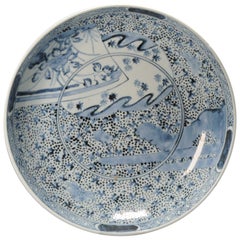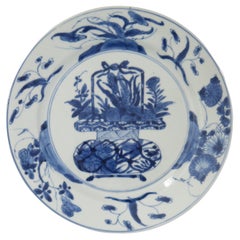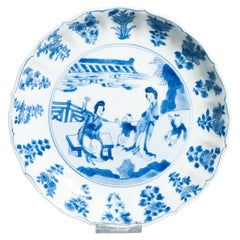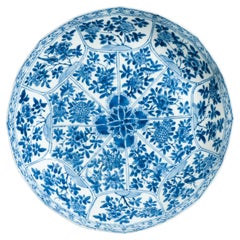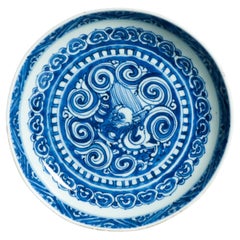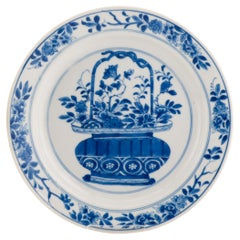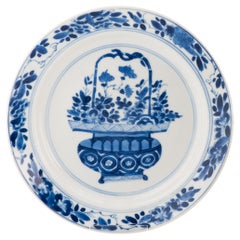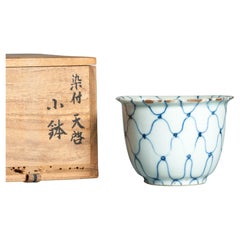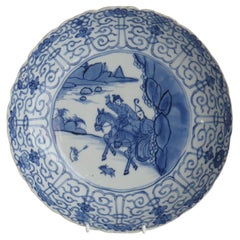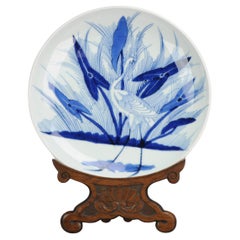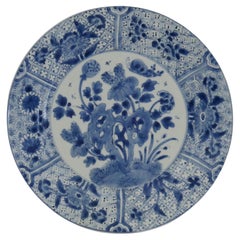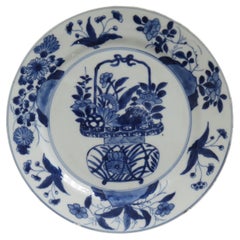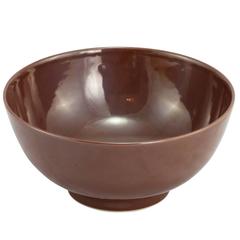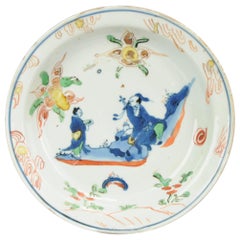17th Century Porcelain Marks
Antique 17th Century Japanese Decorative Dishes and Vide-Poche
Porcelain
Antique Late 17th Century Chinese Qing Ceramics
Porcelain
Antique 17th Century Chinese Qing Ceramics
Porcelain
Antique 17th Century Chinese Qing Ceramics
Porcelain
Antique 17th Century Chinese Ming Ceramics
Porcelain
Antique 17th Century Chinese Ming Ceramics
Porcelain
Antique 17th Century Chinese Ming Ceramics
Porcelain
Antique 17th Century Chinese Ming Ceramics
Porcelain
Antique Late 17th Century Chinese Qing Ceramics
Porcelain
Antique 17th Century Edo Dinner Plates
Porcelain
Antique Late 17th Century Chinese Qing Ceramics
Porcelain
Antique Late 17th Century Chinese Qing Ceramics
Porcelain
Antique Late 17th Century Chinese Qing Ceramics
Porcelain
Antique 17th Century Edo Decorative Dishes and Vide-Poche
Porcelain
Antique 17th Century Edo Decorative Dishes and Vide-Poche
Porcelain
Antique 17th Century Hong Kong Ming Ceramics
Ceramic, Porcelain
Recent Sales
Antique 17th Century Chinese Qing Ceramics
Porcelain
Antique 17th Century Chinese Ming Ceramics
Porcelain
Antique 17th Century Ming Serving Bowls
Porcelain
Antique 17th Century Japanese Edo Ceramics
Porcelain
Antique 17th Century Chinese Qing Ceramics
Porcelain
Antique 17th Century Chinese Qing Ceramics
Porcelain
Antique 17th Century Chinese Qing Ceramics
Porcelain
Antique 17th Century Chinese Qing Ceramics
Porcelain
Antique 17th Century Chinese Qing Ceramics
Porcelain
Antique 17th Century Chinese Qing Ceramics
Porcelain
Antique 17th Century Chinese Qing Ceramics
Porcelain
Antique 17th Century Chinese Ming Ceramics
Porcelain
Antique 17th Century Chinese Ming Ceramics
Porcelain
Antique Late 17th Century Chinese Qing Ceramics
Porcelain
Antique Late 17th Century Chinese Qing Ceramics
Porcelain
Antique Late 17th Century Chinese Qing Ceramics
Porcelain
Antique Late 17th Century Chinese Qing Ceramics
Porcelain
Antique Late 17th Century Chinese Qing Ceramics
Porcelain
Antique Late 17th Century Chinese Qing Ceramics
Porcelain
Antique Late 17th Century Chinese Qing Ceramics
Porcelain
Antique Late 17th Century Chinese Qing Ceramics
Porcelain
Antique Late 17th Century Chinese Qing Ceramics
Porcelain
Antique Late 17th Century Chinese Chinese Export Ceramics
Porcelain
Antique Late 17th Century Chinese Qing Ceramics
Porcelain
Antique 17th Century Chinese Ming Ceramics
Porcelain
People Also Browsed
21st Century and Contemporary Chinese Chinese Export Ceramics
Porcelain
20th Century Russian Neoclassical Natural Specimens
Stone, Malachite
2010s Italian Vases
Porcelain
Antique Early 1900s Chinese Qing Candlesticks
Copper, Enamel
Antique 1850s Chinese Qing Lacquer
Lacquer
Late 20th Century European Modern Animal Sculptures
Marble, Bronze
Antique 18th Century Chinese Qing Animal Sculptures
Porcelain
Antique Early 19th Century Chinese Qing Furniture
Metal
Antique Early 1900s Czech Art Nouveau Vases
Art Glass
21st Century and Contemporary Natural Specimens
Mid-20th Century German Black Forest Taxidermy
Antler, Wood
Early 20th Century Chinese Chinese Export Ceramics
Porcelain, Hardwood
Vintage 1930s French Art Deco Vases
Blown Glass
Vintage 1950s Austrian Art Nouveau Vases
Glass
21st Century and Contemporary American Table Lamps
Brass
Early 20th Century French Art Nouveau Vases
Art Glass
17th Century Porcelain Marks For Sale on 1stDibs
How Much are 17th Century Porcelain Marks?
Finding the Right Ceramics for You
With their rich and diverse history, antique, new and vintage Asian ceramics offer colorful and sophisticated ways to add flair to any space.
Japanese pottery dates back at least 13,000 years to the Jōmon period. Pieces from the Late Jōmon era display a rope-cord pattern encircling a pot or jug. During the Muromachi period, potters created simple bowls and utensils frequently used in tea ceremonies and were made as both functional and aesthetic objects.
Ceramics made during Japan’s Meiji period, from 1868 to 1912, reflected an explosion of artistic expression propelled by new access to international trade. Details became more intricate and refined, and colors were enhanced with new glazing practices.
Chinese porcelain, meanwhile, is often identified by its shape. Each reign and dynasty had specific shapes and styles that were encouraged by the imperial ruler. During the Song dynasty, for instance, there were four dominant types of ceramic vase shapes: plum-shaped, pear-shaped, cong-shaped (tall and square) and double-gourd.
Chinese ceramics that were made during the Qing dynasty were demonstrative of an expanded artistic expression, with more delicate shapes and a focus on intricate detailing. The shapes of ceramics from this era are thinner, taller and have subtle features like a gentle flare, such as on the mallet-shaped vase.
Later, the 17th- and 18th-century interior design trend of chinoiserie brought Asian paintings and screens, textiles and other art and furniture from the continent into many European homes.
Explore an extensive range of antique, new and vintage Asian ceramics on 1stDibs to find the perfect piece for your home.
- 1stDibs ExpertSeptember 23, 2024What 17th-century furniture is called varies. The general term for all furniture produced 100 years ago, including 17th-century pieces, is antique furniture. You may also choose to be more specific and describe a piece by its style. Theatrical and lavish, the Baroque style was prevalent across Europe from the 17th to the mid-18th century and spread around the world through colonialism, including in Asia, Africa and the Americas. Baroque furniture was extravagant in all aspects, from shape to materials. 17th-century pieces from England often feature characteristics of the William and Mary style, such as crisp lines, maple and walnut veneers, inlaid bands and C-scroll ornaments. On 1stDibs, explore a variety of antique furniture.
- 1stDibs ExpertApril 5, 2022Sir Isaac Newton invented the reflector telescope in the 17th century. He created it as a replacement for the refracting telescope, which tended to have poor optics. Find a collection of antique and vintage telescopes on 1stDibs from some of the world’s top sellers.
- 1stDibs ExpertApril 5, 202217th-century Dutch portraiture has many similarities to other Baroque paintings, including rich colors, dark shadows and intense lighting. Many famous Dutch Baroque works lean toward realism. In Dutch portraiture, props and detailed backgrounds are uncommon. You'll find a collection of Dutch Baroque paintings from some of the world’s top art dealers on 1stDibs.
- 1stDibs ExpertApril 5, 2022At the end of the 17th century, Europe went into a frenzy over porcelain. Asian porcelain was highly sought after, and spurred the foundation of the Meissen factory in France, where hard porcelain went on to be made. You’ll find a large collection of porcelain pieces from many of the world’s top sellers on 1stDibs.
Read More
Symbols of Happiness and Rebirth Adorn This Japanese Satsuma Bowl
Decorated with white cranes and the sought-after thousand-butterflies motif, the Meiji-period vessel offers both a celebration of traditional aesthetics and a clear reflection of the era’s appetite for exquisite export pieces.
Chicago’s Pagoda Red Has a Spirited Mix of Asian Antiques and Bold New Art
For 25 years, gallerist Betsy Nathan has leveraged her keen eye and key connections to bring a unique selection of rare finds to the market.
In L.A., Gallerist JF Chen Has Long Championed Eclectic Blue-Chip Design
Now working alongside his daughter Bianca, dealer Joel Chen has presented a most covetable array of antiques, art and contemporary creations for more than 40 years.
12 Calming Spaces Inspired by Japanese Design
From cherry-blossom-adorned walls paired with glamorous lighting to wood-paneled ceilings above checkerboard-patterned chairs, these 12 spaces seamlessly blend Eastern and Western aesthetics.
Rodrigo Rivero Lake’s Mexico City Showroom Is a Museum-Worthy Trove of Spanish Colonial and Asian Antiques
The dealer and curator has spent the past 50 years amassing a collection of exceptional art, furniture and architectural elements that trace the cultural influence of the Spanish empire from Europe to the Americas and beyond.
16 Refined Asian-Inspired Interiors
These spaces exemplify how Eastern elements elevate a home's decor.
